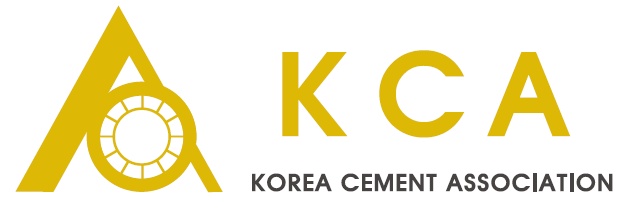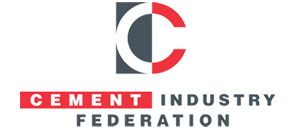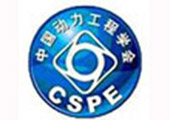| à???tyle="font-size:16px; font-weight:800" align="center">2nd Asia Green Glassmaking Plant Summit 2020 Event Background
On June 28, 2019, the China Building Materials Federation (CBMF)organized an industry standard review meeting for the “Glass Industry Green Factory Evaluation Guidelines” in Beijing.Green and intelligent are the main directions for future development.Based on sufficient research and verification, the standard puts forward specific requirements for green glassmaking plant industry evaluation from multiple dimensions such as infrastructure, management system, energy resource input, product, environmental emissions and comprehensive performance;Meanwhile, the standard combines the characteristics of the glass industry, and puts forward the indicators, requirements & methods for comprehensive, advanced operability of environmental green development in terms of environmental emissions, comprehensive utilization of resources, and energy consumption.The standards have reached the international advanced level.In the follow-up work, the glass industry will accelerate the formulation of the “Glass Industry Green Factory Evaluation Requirements”, which will stipulate the specific scoring rules and terms, in accordance with the evaluation index system tipulated in the Guidelines, utilize the function of standards guide companies to develop green factories and evaluattion completely,guide glass industry enterprises to accelerate the green factories establishment, improve the overall green and low carbon development level,achieve high quality development.
On July 11, 2019, in order to do a good job in the "14th five-year" industrial energy-saving ideas, the department of energy and comprehensive utilization of the MIIT organized a survey on energy-saving work in the building materials industry, focusing on the flat glass industry, and researching the next step of energy-saving measures and work focus.
On July 12, 2018, in order to implement the PRC Environmental Protection and Air Pollution Prevention and Control Law,complete the national air pollutant emission standards and improve the air environment quality, the MEE organized the drafting of national environmental protection standard "Domestic Glass Industry Pollutant Emission Standards (Draft)" "Fiberglass and Related Products Industry Pollutant Emission Standards (Draft)".
On July 1, 2019, the MEE, NDRC, MIIT, and MOF issued the "Industrial Kiln Air Pollution Comprehensive Treatment Program" (Env Air [2019] No. 56) document, which requires the active promotion of flat glass industry pollution treatment upgrade and retrofit.Flat glass enterprises in key areas should eliminate the desox and denoxflue gas bypass gradually or set up backup desox and denox facilities,establish and improve the flat glass industry flue gas monitoring system.Strengthen building automatic monitoring system for key pollution sources. The elevated resources of exhaust vent height more than 45 meters is included in the key pollutant emission organizations list, urge the flat glass enterprises to install automatic monitoring facilities for flue gas emissions.Complete the air pollutant emission standards for domestic glass and glass fiber industries formulation before the end of June 2020.Accelerate the revision of the comprehensive air pollutants emission standards.Encourage local governments to revise local emission standards for relevant industries.Flat glass and fiberglass kiln should be equipped with high-efficiency dedusting facilities such as ESP, bag filter and electrostatic-fabric integrated precipitator,limestone gypsum desox and SCR facilities.Encourage fiberglass companies use oxygen-enriched combustion or oxy fuel combustion mode.Other domestic glass melting furnaces (except all-electric melting and all-oxygen burning furnaces) shall be equipped with SCR denox facilities;The melting furnace with coal, petroleum coke, heavy oil, etc. as fuel should be equipped with bag filter dust removal facilities,high-efficiency desox facilities such as limestone gypsum.Dedusting and desox facilities shall be equipped in natural gas-fired furnace of flue gas particulate ma 2nd Asia Green Glassmaking Plant Summit 2020 Endorsers

Chinese Society of Power Engineering is the academic mass organization of national power engineering science and technology professionals, a part of (CAST) China Association for Science and Technology, its predecessor the Chinese Society of Mechanical Engineering Turbine and Boiler,was established in 1962, changed its name to China Machinery Society of Power Engineering in 1979. According to the requirement of China's power engineering disciplines development and the majority of power engineering science and technology professionals, become a national top level society - China Society of Power Engineering in December 1988,was approved by the National Science and Technology Commission, joined the (CAST)China Association for Science and Technology in August 1992 . The Society is a multi-disciplinary comprehensive society focusing on the research, design and manufacture of power generation thermodynamic equipment. It includes 11 professional committees such as turbine, boiler, hydraulic turbine, nuclear power, industrial gas, automatic control, materials, environmental protection technology and equipment, new energy equipment industrial gas and academic, organization, international cooperation, editing and publishing, consulting and exhibitions and other five working committees.
中国动力工程学会是全国动力工程科技工作者的学术性群众团体,是中国科学技术协会的组成部分,它的前身是1962年成立的中国机械工程 学会透平与锅炉学 会,1979年更名为中国机械工程学会动力工程学会。根据我国动力工程学科发展需要和广大动力工程科技工作者的要求, 1988年12月经国家科委批准成为 国家一级学会——中国动力工程学会,1992年8月加入中国科协。 本会是以发电热动力机械设备的研究、设计、制造为中心的多专业的综合性学会。它设有透平、锅炉、水轮机、核电、热力、工业煤气、自 控、材料、环保技术与装 备、新能源设备、工业气体等11个专业委员会以及学术、组织、国际合作、编辑出版、咨询与展览等5个工作委员 会。


The All India Glass Manufacturers' Federation was founded in 1944. The Federation is made up of five Regional Associations viz., Eastern India Glass Manufacturers' Association (EIGMA)- Kolkata, Northern India Glass Manufacturers' Association (NIGMA)- Sahibabad Ghaziabad (UP),South India Glass Manufacturers' Association (SIGMA)- Hyderabad, U.P. Glass Manufacturers' Syndicate (UPGMS)- Firozabad and Western India Glass Manufacturers' Association (WIGMA)-Mumbai . The Federation was incorporated under the Companies Act, 1956 (No. 1 of 1956) as a Limited Company on 25.06.1970.
Glass Manufacturers’ Association of the Philippines – GMAPI? ?

Malaysia Glass Association (MGA) was founded in 1974 to protect the interest of glass merchants in the country while driving the growth of the glass trade here.
Over the years, MGA has unfailingly fostered camaraderie among glass merchants and united them under a single common purpose of driving a flourishing trade. It relentlessly worked towards setting quality standardisation in protecting the fair interest of every consumer. MGA also liaised with associations having similar aspirations in pursuance of a sprightly climate to boost the glass industry as well as the building and construction industry.
Since then, MGA has grown from strength to strength, growing in numbers and good reputation. It has forged close ties with glass associations from around the region. Through its business partnerships, MGA keeps abreast of changes in the glass industry and maintains relevance in this fast changing society.
Thai Plate Glass Industry Association

? Vietnam Glass Association (Vieglass).

To be the main influencer of the glass industry, and be an exemplary Singapore Association
To instil innovation and transformation within the glass industry and its members through education, collaboration, training and service.
To promote better relations and create business opportunities.
Our Objective
To foster relation and understanding amongst glass specialists and other contributors to the trade (engineers, contractors etc);
To encourage the development of facilities and training of managers, chemists, engineers, researchers and executives of the glass and glazing trade;
To provide recreational facilities for the immersion of culture, music and other kinds of social activities;
To implement any developmental plans or commercial activities that are for the benefit and good of SGA and its members;
To assist members in increasing their business opportunities and attaining higher levels of productivity and proficiency thought various means, including SGA’s affiliations with foreign glass merchants and glaziers associations;
To increase public awareness of SGA and its practices by organizing and conducting course seminars and workshops on glass knowledge for the general public;
To look after the welfare of members and promote fellowship amongst them, as well as to resolve disputes among members, if any;
To identify issues and anticipate trends in the glass merchants and glaziers industry;
To represent members in discussions and dialogues with other trade/industry bodies and the government.

The flat glass industry in Japan has repeatedly undertaken a number of technological innovations and has been supplying glass sheets to all fields of life including construction, automobiles, vehicles, etc., and it can not be thought of separately from modern society.
In addition, with the remarkable technological advancement, products diversified, their quality has become more sophisticated, and we have responded to the growing social demand.
The expectation that the industry in each field will put on "flat glass" is still not small.
In familiar places, we are proactively promoting the spread of "double glazing" products that meet the social needs of energy conservation of buildings such as general houses and buildings.
Meanwhile, we are working on the prevalence of natural disasters such as earthquakes and typhoons and the spread of safety glass, which prevents accidents caused by plate glasses such as schools and houses, and ensures safety.
In the future, there are new needs such as space development, electronics, photovoltaic power generation, etc., and great expectations are gathered.
We also strive to streamline energy conservation and other aspects of manufacturing glass sheets, and we are also proactively working on environmental issues.
To deal with such various problems, the association will make further progress in cooperation with other related industries in the future, prepare to meet the needs of the coming new era sufficiently, and are making a leap to the next generation.

The Korean Glass Industry Association has been established to promote the stable development of the plate glass industry and cooperative projects to enhance international competitiveness, and to collect and rapidly provide domestic and foreign new technology information to promote the rights of member companies and strengthen their competitiveness.
The keywords for the architectural sheet glass market are how the industry responds to the rapidly changing legislation. The energy conservation policies of government buildings are strengthening each year and are also a global trend.
In addition, due to various natural disasters and safety accidents, the expansion of safety consciousness suggests how the market for architectural sheet glass should move forward. It is time for the market to grow in quality and to take a step further in the technological leap.
It is now becoming a universalized high-grade glass which is responsible for both energy saving and safety from gas injection insulation glass, insulation spacer, reinforcement for safety, and spliced ??glass. Qualitative growth in this glass industry can be both a crisis and an opportunity.
If we are able to communicate with the representatives of the member companies in the future, such as saying 'crisis is an opportunity soon', it will surely be a stepping stone for the glass industry.
We will always take the lead in solving pending issues by persuading the government and political circles to have the vision and goal of faithfully fulfilling the agenda for the development of the plate glass industry so that the opinions of the industry can be reflected in the policy. Thank you for your interest and support. Thank you.

Indonesia Flat & Safety Glass Association( aklp)

AWA-AGGA Limited will be the peak association representing over 1000 member companies covering window manufacturers, glass manufacturers, glass processors, merchants, glaziers and suppliers of supporting machinery, services and materials.

The Glass Fiber Association was organized in July 1966 as a member of the glass fiber product manufacturing business with the aim of sound development of the glass fiber industry in Japan. Since then, many glass fiber products have been sent to the world in a wide variety of fields. The Glass Fiber Association will continue to actively develop and promote business for industry development, such as the spread and demand expansion of glass fiber products, and the development of new markets. We will strive to contribute to society through manufacturing.

The association arose from the integration of fiberglass industry entrepreneurs, which for the first time combined.Is a club under the coordination of the Industrial Services Division Department of Industrial Promotion.Ministry of Industry on February 26, 2536, later, there are entrepreneurs to join as members.Increased and therefore registered with the Office of the National Culture Commission as an association.On March 21, 1995 under the name "Thai Fiberglass Industry Association" later changed.The name is "Thai Composites Association" with the aim to develop the composite industry. To progress as equal to many countries.

A group of glass bottle manufacturers.
Asia Green Cement Manufacturing Summit 2020 Endorsers

Chinese Society of Power Engineering is the academic mass organization of national power engineering science and technology professionals, a part of (CAST) China Association for Science and Technology, its predecessor the Chinese Society of Mechanical Engineering Turbine and Boiler,was established in 1962, changed its name to China Machinery Society of Power Engineering in 1979. According to the requirement of China's power engineering disciplines development and the majority of power engineering science and technology professionals, become a national top level society - China Society of Power Engineering in December 1988,was approved by the National Science and Technology Commission, joined the (CAST)China Association for Science and Technology in August 1992 . The Society is a multi-disciplinary comprehensive society focusing on the research, design and manufacture of power generation thermodynamic equipment. It includes 11 professional committees such as turbine, boiler, hydraulic turbine, nuclear power, industrial gas, automatic control, materials, environmental protection technology and equipment, new energy equipment industrial gas and academic, organization, international cooperation, editing and publishing, consulting and exhibitions and other five working committees.
中国动力工程学会是全国动力工程科技工作者的学术性群众团体,是中国科学技术协会的组成部分,它的前身是1962年成立的中国机械工程 学会透平与锅炉学 会,1979年更名为中国机械工程学会动力工程学会。根据我国动力工程学科发展需要和广大动力工程科技工作者的要求, 1988年12月经国家科委批准成为 国家一级学会——中国动力工程学会,1992年8月加入中国科协。 本会是以发电热动力机械设备的研究、设计、制造为中心的多专业的综合性学会。它设有透平、锅炉、水轮机、核电、热力、工业煤气、自 控、材料、环保技术与装 备、新能源设备、工业气体等11个专业委员会以及学术、组织、国际合作、编辑出版、咨询与展览等5个工作委员 会。

Cement Manufacturers Association (CMA) is the apex body of major cement plants in India. We are the Indian Cement Industry’s consolidated voice on issues such as environment, waste recycling, taxation, logistics and fuel supply among others. Each year we organise 10-15 meetings, which are dedicated to functional heads in the Cement Industry and enable discussion on specific critical factors impacting businesses such as environmental issues, logistics, mines and minerals, fuel and energy.
Cement Industry in India
The Cement Industry globally has immense forward and backward linkages with a Nation’s economy. For a developing and transitioning economy such as India, the value proposition of the Cement Industry is even greater given the immense infrastructure requirements of a growing and urbanising country, as well as its contributions by way of direct and indirect employment. The Government of India has emphasised its focus on infrastructure development with the announcement of several schemes that cut across manufacturing, housing and education. At the heart of all the planned infrastructure development is the cement sector and, as part of the Country’s bouquet of eight core industries, the Cement sector’s value proposition for laying the foundations of a new India is unique.
Accounting for over 7% of the global installed capacity, the Indian Cement sector is the second largest cement industry in the world, second only to China. It plays a binding and pivotal role in both the infrastructure and socio-economic development of the Country; moreover, the Indian Cement Industry is the fourth-largest revenue contributor to the exchequer and the second- largest revenue contributor to the Indian Railways — it contributes nearly US$ 7.14 billion (INR 50,000 crore) per annum to Government via taxes and levies, and about US$ 1.29 billion (INR 9,000 crore) per annum to the Indian Railways by way of freight revenue.
The total installed capacity in the Indian cement sector is approximately 500 million tonnes per annum, while cement production is approximately 280 million tonnes per annum, signifying a capacity utilisation of around 59%. Dominated by domestic players, the Indian Cement Industry has been a first mover with regard to keeping pace with changing socio-economic and environmental paradigms, whether it is adoption of new technologies, adhering to stricter environmental standards or utilising other industries’ waste produce.
Its essential characteristics lend the Cement Industry a fundamental role vis-à-vis its compatriots in the core infrastructure sector basket — the Industry is the foundation, the binding force for all infrastructure projects, including roads, bridges, housing, sanitation and water conservation. From the perspective of the Country’s future development, promoting sectoral growth is important for increased investments and capacity additions.
On World Environment Day, at a CMA driven expo in New Delhi co-hosted by UNEP and the Government of India, the cement association was the only industry body in the country to pledge to use all the segregated plastic waste made available to it to the tune of 12 million tonnes of plastic waste in its cement kilns annually by 2025. This would result in conservation of considerable quantities of conventional fuels such as coal.

The principal objectives of ICA are:
1. ICA activities are acting as a bridge and channel of communication, consultation, and information with the government and other relevant institutions at national, regional as well as international levels, in accordance to supporting the control of efforts to prevent damages and pollution to the environment.
2. Supporting and promoting the utilization level of cement and concrete, construction material and cement products for building material as well as other efforts.
3. Supporting and promoting the realization of quality standards and certification in relation to the cement industry in a continues manner
4. Promoting energy saving and efficiency by among other things developing alternative and renewable energy
5. Promoting the application of Good Corporate Governance in undertaking business activities

Thailand Fellowship of Cement Manufacturers or TFCM which was founded in 1977 was one of the 44 industry clubs under the Federation of Thai Industries (FTI). Subsequently, in 2006, Thai Cement Manufacturers Association or “TCMA” has been established with the same roles and objectives as TFCM in serving as a coordinating office among Thai cement manufacturers and government agencies as well as non-government organizations in the country and international levels.
Thai Cement Manufacturers Association (TCMA) is also the members of international cement organizations in the region. For instance, TCMA has been the co-founder of the ASEAN Federation of Cement Manufacturers or “AFCM” since 1977 with seven country members in ASEAN region

The steady growth of the cement industry in Malaysia saw the need for an Association to look after its interests. In 1965, the Cement and Concrete Association (C&CA) of Malaysia came into being with 3 founding members i.e. Malayan Cement Limited (MCL), Malaya Industrial and Mining Corporation (MIMCO) and Tasek Cement Limited (TCL). It is now a 15 members strong Association with the same objectives as it had, during its inception.

The Association originally known as Cement Manufacturers Association of Singapore was formed in 1980 by cement grinding companies. Due to the change of operation from grinding cement clinker to import of cement through bulk cement terminals the name of the association was changed to Cement and Concrete Association of Singapore.
To further the overall interest of the members and to establish links with cement and concrete related organizations nationally and internationally and to foster information exchange and closer cooperation with such organizations.
To promote usage of cement and concrete products
To promote health, safety and environmental awareness in the cement and concrete industries
To liaise with government and relevant bodies in the formulation of technical specifications and industrial practices

The Japan Cement Association (JCA), established in 1948, is a trade organization comprised of all 17 cement manufacturers in Japan (as of April 2015). The primary roles and activities of the JCA are summarized below.
Support of research and development for the purpose of raising the level of cement and concrete technology, targeting of academic societies and the business community with a broad range of programs positioned to cultivate capable researchers and promote fruitful technical exchange.
Engage in awareness campaigns aimed at disseminating knowledge and improving technology concerning cement and concrete, together with advancing joint research with government-affiliated organizations in the quest to promote more extensive concrete paving.
Advance the establishment of environment-conscious production systems, mount active responses to the global warming problem, receive waste materials in the interest of helping build a recycling-oriented society and otherwise promote eco-friendly improvements. Facilitate general consumer understanding of the contributions to the creation of a recycling-oriented society through effective use of waste and byproducts at cement plants. Participate in the planning and holding of international conferences, striving to further global cooperation and expand energy-saving technologies in the cement industry.
Carry out investigations and studies into the revision and enactment of Japanese Industrial Standards pertaining to cement. Organize discussions and studies with regard to international standards.
Advance research and draw up statistics on cement production, distribution and consumption, publicly disclose these findings through press conferences, websites and other means, and supply such information to relevant organizations and groups and other pertinent parties on a timely basis.
Strive on behalf of the cement industry to offer opinions to the government and implement meaningful lobbying activities.

Since its establishment in 1963, KCA has acted as the hub role to the advancement of cement and concrete industries. Representing 11 member companies, KCA plays a wide range of roles including making recommendations to the government authority with innovative policies, enhancing competitiveness of the cement industry, collecting and providing information on the cement and construction industries, boosting cooperation among the member cement companies.
Mission
On behalf of cement producers in Korea, our mission is to foster and expand the effective uses of cement, concrete and other cement products through partnerships with related organizations and institutions in marketing, engineering and public affairs.

Cement manufacurers’ association of the Philippines
Formerly known as cement institute of the Philippines until 1965.
The association enjoyed the support of the Philippine government which recognized its importance in ensuring economic growth.
The early industry association’s goals were to pool the resources of the cement industry and to undertake various endeavors that would enhance its orderly growth and share in the development of the nation’s economy.

Hi?p h?i xi m?ng vi?t nam
The Viet nam National Cement Association is a voluntary, non-governmental organization that comprises enterprises operating in the cement industry. The aim of the association is to facilitate the cooperation among its members to boost the development of each enterprises and of the cement industry as a whole, and to protect the interest of its members within the legal framework of the Socialist Republic of Vietnam.

Australia's cement industry is currently comprised of three main producers: Adelaide Brighton Ltd, Cement Australia Pty Ltd and Boral Cement Ltd. Cement plants are located in regional centres or in small rural communities making the industry a significant regional employer. The cement industry in Australia employs over 1,300 people and produces over ten million tonnes of cementitious materials with an annual turnover in excess of A$2.4 billion. The industry is responsible for around 5.3 Mt per annum of greenhouse gas emissions. |






































